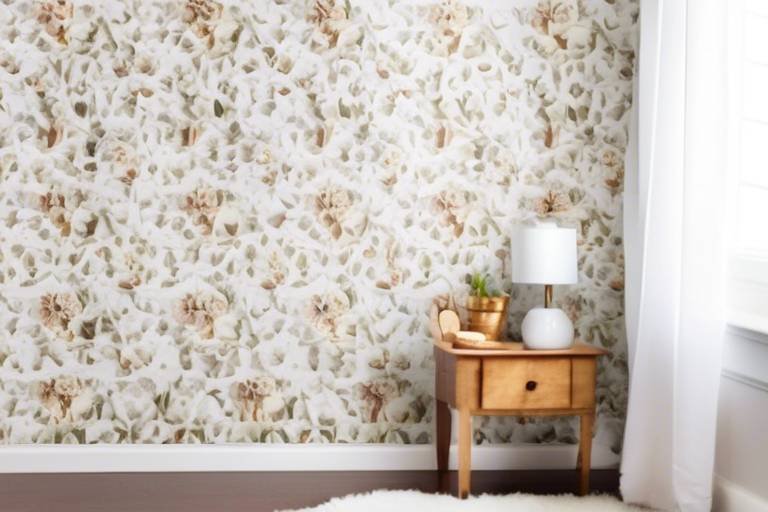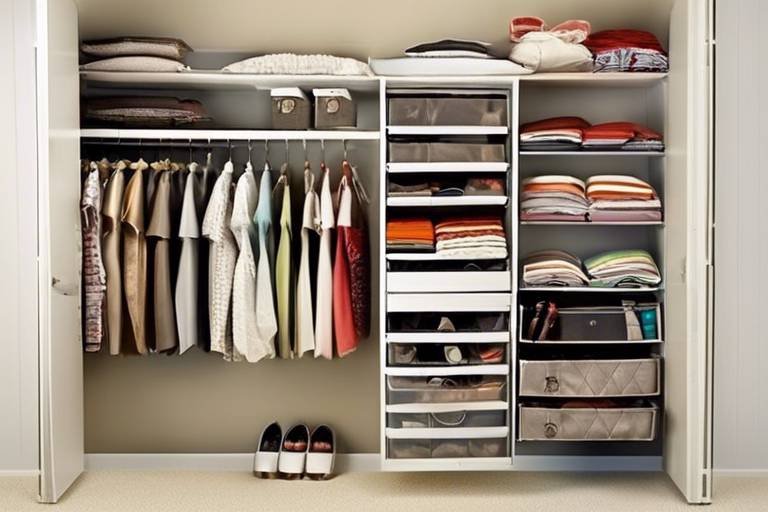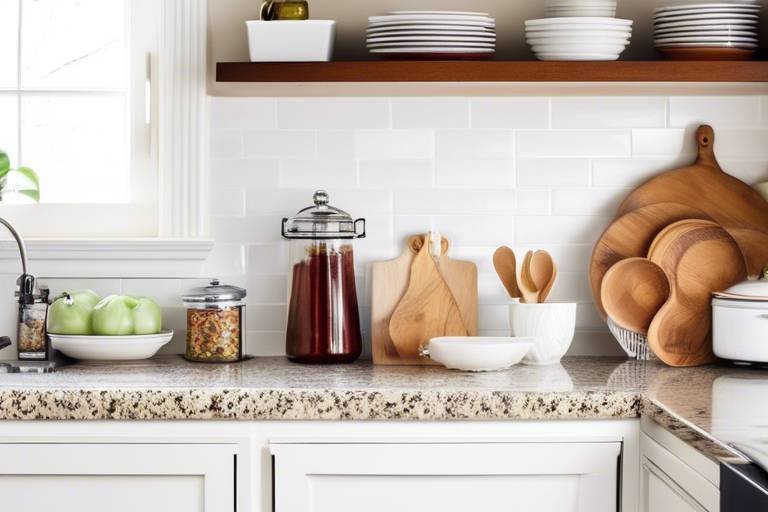How to Apply Minimalism to Your Home’s Exterior Design
Minimalism is not just a design trend but a way of life that can transform your home's exterior into a sleek and sophisticated space. By applying minimalist principles to your outdoor design, you can create a harmonious and serene environment that exudes elegance and simplicity. Let's explore how you can achieve a minimalist look for your home's exterior.
One of the key aspects of minimalist design is choosing a simple color palette that creates a sense of calm and cohesion. Opt for muted tones and neutral colors like whites, grays, and earthy tones to achieve a clean and minimalist look that enhances the overall aesthetic of your home's exterior.
Embracing clean lines and shapes is essential in minimalist design. Incorporate geometric shapes and straight lines in the architecture and landscaping to create a sleek and modern aesthetic. Simple, uncluttered lines can give your home a sophisticated and timeless appeal.
To achieve a minimalist exterior, decluttering outdoor spaces is crucial. Remove unnecessary items and focus on essential elements such as functional furniture and architectural features. By simplifying your outdoor area, you can create a sense of openness and tranquility.
Utilizing natural materials is another key element of minimalist design. Opt for materials like wood, stone, and metal to add warmth and texture to your home's exterior. These natural elements can complement the minimalist aesthetic while creating a welcoming and organic feel.
Implementing functional landscaping is essential for maintaining a minimalist exterior. Design a low-maintenance landscape with native plants and simple hardscaping elements to complement the clean lines of your home. A well-designed landscape can enhance the overall look of your home while keeping maintenance to a minimum.
Choosing simple and modern lighting fixtures can enhance the minimalist appeal of your home's exterior. Opt for sleek and energy-efficient lighting that illuminates key areas of your outdoor space. Well-placed lighting can create a welcoming ambiance and highlight the architectural features of your home.
Creating a seamless indoor-outdoor connection is key to achieving a minimalist design. By blurring the lines between indoor and outdoor spaces with large windows, sliding doors, and outdoor living areas, you can create a cohesive and integrated design that enhances the overall aesthetic of your home.
Adding minimalist exterior accents such as furniture, decor, and architectural details can elevate the look of your home's exterior. Choose simple and elegant pieces that complement the minimalist style of your home. These accents can add personality and charm to your outdoor space without overwhelming the design.
Finally, maintaining a clutter-free entryway is essential for making a welcoming first impression with a minimalist touch. Keep the entryway clean and uncluttered with simple furnishings and minimal decor. A well-designed entryway sets the tone for the rest of your home's exterior and creates a sense of harmony and balance.

Choosing a Simple Color Palette
When it comes to transforming your home's exterior into a minimalist oasis, the color palette you choose plays a crucial role. Opting for a simple color scheme can significantly impact the overall look and feel of your property. By selecting muted tones and neutral colors, you can achieve a clean and minimalist aesthetic that enhances the architectural features of your home.
Imagine painting your exterior walls in soft shades of white, beige, or grey. These understated colors not only create a sense of calm and serenity but also provide a blank canvas for other design elements to shine. Pairing these hues with natural materials like wood or stone can further elevate the minimalist look, adding warmth and texture to your home's facade.
Additionally, a simple color palette can help unify different elements of your exterior design, creating a cohesive and harmonious appearance. Whether you're revamping your siding, trim, or front door, sticking to a subdued color scheme can tie everything together for a sleek and modern finish.
By embracing simplicity in your color choices, you can achieve a timeless and elegant exterior that exudes sophistication and style. So, next time you're considering a paint job or exterior renovation, remember the power of a simple color palette in transforming your home into a minimalist masterpiece.

Embracing Clean Lines and Shapes
When it comes to transforming your home's exterior into a minimalist masterpiece, one key aspect to focus on is . By incorporating geometric shapes and straight lines in both the architecture and landscaping, you can achieve a sleek and modern aesthetic that exudes simplicity and sophistication.
Imagine the exterior of your home as a canvas where every line and shape serves a purpose, contributing to the overall harmony of the design. Opting for clean, sharp lines in the architecture can create a sense of order and precision, while geometric shapes add visual interest and a contemporary flair.
Additionally, landscaping plays a crucial role in enhancing the clean lines of your home's exterior. By incorporating simple and well-defined shapes in your outdoor space, such as rectangular plant beds or linear pathways, you can create a cohesive look that complements the architectural design.
When selecting plants for your minimalist landscape, consider those with clean and structured shapes that align with the overall theme. Native plants that require minimal maintenance and have a neat appearance can help maintain the simplicity of the outdoor space.
Moreover, hardscaping elements like concrete pavers or gravel pathways can further emphasize the clean lines and shapes of your exterior design. These features not only add functionality but also contribute to the overall aesthetic by creating a sense of order and structure.
By embracing clean lines and shapes in your home's exterior design, you can achieve a sophisticated and minimalist look that is both visually appealing and harmonious. Remember, simplicity is key when it comes to creating a modern and elegant outdoor space.

Decluttering Outdoor Spaces
When it comes to decluttering outdoor spaces, the key is to create a serene and organized environment that enhances the minimalist design of your home's exterior. By removing unnecessary items and focusing on essential elements, you can achieve a clean and uncluttered outdoor area that exudes simplicity and sophistication.
One effective way to declutter outdoor spaces is to assess the current layout and identify items that do not serve a practical or aesthetic purpose. Consider removing excess furniture, decorations, or plants that overcrowd the space and detract from the overall minimalist look you are aiming for.
Additionally, storage solutions such as outdoor cabinets, benches with hidden compartments, or vertical shelving can help keep outdoor essentials neatly stored away, reducing visual clutter and maintaining a streamlined appearance.
Creating designated zones for different activities, such as dining, lounging, or gardening, can also help organize outdoor spaces and prevent them from feeling chaotic. By defining specific areas for each function, you can ensure that the outdoor space remains functional and visually appealing.
Furthermore, incorporating multi-functional furniture pieces, such as benches that double as storage or tables with built-in planters, can maximize space efficiency and reduce the need for excess items cluttering the outdoor area.
When decluttering outdoor spaces, it's essential to strike a balance between simplicity and functionality. By carefully curating the items and elements in your outdoor area, you can create a harmonious and inviting space that complements the minimalist design of your home's exterior.

Utilizing Natural Materials
When it comes to applying minimalism to your home's exterior design, one crucial aspect is . Natural materials such as wood, stone, and metal play a significant role in creating a warm and inviting atmosphere while maintaining a minimalist aesthetic. These materials not only add texture and visual interest but also blend harmoniously with the surrounding environment.
Wood is a versatile material that can be used for various exterior elements, including siding, decking, and pergolas. Its natural beauty and warmth can soften the clean lines of a minimalist design, adding a touch of organic charm. Stone, on the other hand, provides a sense of solidity and timelessness, perfect for creating focal points like retaining walls or pathways.
Additionally, incorporating metal accents such as steel or iron can introduce a modern edge to the exterior design. From sleek railings to minimalist sculptures, metal elements can add a contemporary touch while maintaining the overall simplicity of the space.
By choosing natural materials thoughtfully and integrating them into your home's exterior, you can achieve a harmonious balance between modern minimalism and the beauty of the natural world.

Implementing Functional Landscaping
Implementing functional landscaping is a key element in applying minimalism to your home's exterior design. By focusing on creating a low-maintenance landscape that complements the minimalist aesthetic of your home, you can achieve a cohesive and harmonious outdoor space. One approach to functional landscaping is to incorporate native plants that are well-suited to your climate and require minimal upkeep. These plants not only add a touch of greenery but also contribute to the overall simplicity of the design.
Another aspect to consider is the use of simple hardscaping elements such as gravel pathways, concrete pavers, or minimalist garden structures. These features not only serve a practical purpose but also enhance the clean and uncluttered look of the outdoor area. By keeping the landscaping design straightforward and functional, you can create a serene and inviting outdoor space that aligns with the minimalist theme of your home.

Installing Simple and Modern Lighting
When it comes to creating a minimalist exterior design for your home, one crucial aspect to consider is the lighting. Installing simple and modern lighting fixtures can significantly enhance the overall aesthetic while maintaining the minimalist appeal.
Opting for sleek and energy-efficient lighting options not only illuminates the exterior of your home but also complements the clean and uncluttered look you are aiming for. Consider fixtures with minimalist designs that blend seamlessly with the architecture of your home.
By strategically placing modern lighting fixtures along pathways, near entryways, and highlighting architectural features, you can create a welcoming ambiance while accentuating the simplicity of the design.
Furthermore, choosing lighting that is functional and aesthetically pleasing can elevate the overall appeal of your home's exterior. Whether it's wall sconces, recessed lighting, or pathway lights, each fixture should contribute to the minimalist theme you are aiming to achieve.

Creating a Seamless Indoor-Outdoor Connection
Creating a seamless indoor-outdoor connection is essential for achieving a harmonious and integrated design for your home. By blurring the lines between the interior and exterior spaces, you can create a cohesive living environment that enhances the overall appeal of your property.
One way to achieve this connection is by incorporating large windows and glass doors that allow natural light to flood into your home while providing unobstructed views of the outdoor surroundings. This not only creates a sense of openness but also brings the beauty of nature indoors.
Additionally, outdoor living areas such as patios, decks, or terraces can serve as extensions of your indoor space, providing a seamless transition between the two areas. By furnishing these outdoor spaces with comfortable seating, dining areas, and greenery, you can create inviting areas for relaxation and entertainment.
Furthermore, using similar design elements and materials both inside and outside can help unify the spaces. Consistent flooring, color schemes, and architectural details can reinforce the connection between the interior and exterior, creating a sense of continuity throughout your home.
By creating a seamless indoor-outdoor connection, you not only enhance the visual appeal of your home but also promote a sense of unity and flow between the different areas. This design approach allows you to fully enjoy and appreciate both the indoor comforts and outdoor beauty of your property.

Adding Minimalist Exterior Accents
When it comes to adding minimalist exterior accents to your home, less is definitely more. The key is to select simple and sleek furniture, decor, and architectural details that complement the clean lines and modern aesthetic of your home's exterior.
Opt for minimalist outdoor furniture with clean and understated designs. Think along the lines of simple benches, sleek chairs, and unadorned tables that blend seamlessly with the overall minimalist look of your home's exterior.
Consider incorporating minimalist decor elements such as sculptural planters, geometric sculptures, or abstract art pieces that add visual interest without overwhelming the simplicity of the design.
When it comes to architectural details, focus on clean and modern finishes such as metal accents, smooth stucco walls, and minimalist window frames that enhance the minimalist appeal of your home's exterior.
Remember, the goal is to create a harmonious and cohesive look that exudes sophistication and elegance through the careful selection of minimalist exterior accents.

Maintaining a Clutter-Free Entryway
When it comes to creating a minimalist exterior design for your home, the entryway plays a crucial role in setting the tone for the entire space. Maintaining a clutter-free entryway is essential to achieve a clean and welcoming look that aligns with minimalist principles. By keeping the entryway simple and uncluttered, you can create a serene and inviting atmosphere that makes a lasting first impression on visitors.
One effective way to maintain a clutter-free entryway is by incorporating functional storage solutions that help keep items organized and out of sight. Consider installing a sleek storage bench or wall-mounted shelves to store shoes, bags, and other essentials neatly tucked away. By having designated storage areas, you can prevent clutter from accumulating in the entryway and maintain a streamlined look.
In addition to storage solutions, choosing minimalist furniture and decor for the entryway can further enhance its clean and uncluttered appearance. Opt for simple furnishings with clean lines and neutral colors that complement the overall minimalist design of your home's exterior. Avoid overcrowding the space with unnecessary decorations and instead focus on a few key pieces that make a statement while maintaining a sense of simplicity.
Lighting also plays a significant role in maintaining a clutter-free entryway. Selecting modern and minimalist lighting fixtures can not only illuminate the space effectively but also add a touch of style to the area. Consider installing wall sconces or pendant lights that provide ample light while contributing to the overall aesthetic of the entryway.
Furthermore, incorporating natural elements such as potted plants or a small indoor garden can bring a refreshing touch of greenery to the entryway. These natural accents not only add visual interest but also promote a sense of tranquility and harmony in the space. Choose plants that are easy to maintain and complement the minimalist style of the entryway.
By maintaining a clutter-free entryway with functional storage solutions, minimalist furniture and decor, modern lighting fixtures, and natural accents, you can create a welcoming and harmonious space that embodies the essence of minimalist design. Keeping the entryway simple and uncluttered sets the tone for the rest of your home's exterior, making a strong statement about your design aesthetic and attention to detail.
Frequently Asked Questions
- What are the benefits of applying minimalism to my home's exterior design?
Embracing minimalism in your home's exterior design can create a sense of calm, sophistication, and modernity. It allows for a clean and uncluttered look that enhances the overall aesthetics of your property. Additionally, minimalism promotes a focus on essential elements, leading to a more organized and visually appealing outdoor space.
- How can I choose the right color palette for a minimalist exterior design?
When selecting a color palette for your home's exterior, opt for muted tones and neutral colors such as whites, grays, and earthy hues. These colors create a serene and timeless look while maintaining a minimalist feel. Avoid bold or vibrant colors that may disrupt the simplicity of the design.
- What materials work best for achieving a minimalist exterior?
Natural materials like wood, stone, and metal are ideal for achieving a minimalist exterior design. These materials add warmth, texture, and a sense of authenticity to your home's exterior while complementing the clean lines and simple aesthetics of minimalism.
- How can I create a seamless indoor-outdoor connection in my home?
To blur the lines between indoor and outdoor spaces, consider incorporating large windows, sliding doors, and outdoor living areas. These elements help create a cohesive design that allows for a smooth transition between the interior and exterior of your home, enhancing the overall flow and functionality.



















